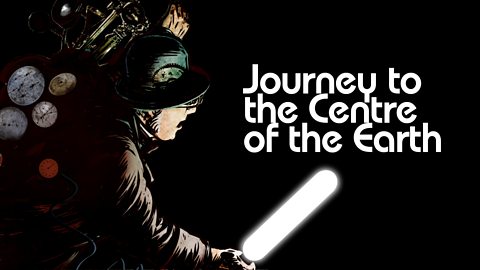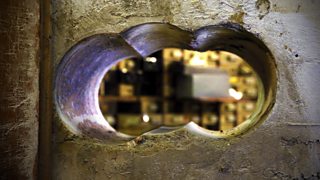What lies at the centre of the earth?
Despite successful expeditions into space and journeys to every crevice of the earth’s surface, very little is actually known about what lies beneath us. Through the centuries different theories in literature, culture, and science have emerged about what could be at the heart of our planet. As Radio 4 broadcasts its latest adaptation of , we consider these theories about what lies at the planet's core...

Preview: Journey to the Centre of the Earth
In Jules Verne's epic tale, Axel embarks on a dangerous adventure. Will he survive?
The literary adventurer Jules Verne provided us with one of the most interesting and exciting visions of a subterranean world. In his 1864 novel A Journey to the Centre of the Earth, a group of scientists and explorers descend into the crater of an Icelandic volcano and discover a prehistoric underworld complete with oceans, forests, and terrifying giant creatures, including a 12-foot high proto-human. On their dangerous journey, Verne’s explorers encounter a vivid biosphere, a gloomy world lit by electrically charged gas, with a landscape of fungal plants, petrified trees, and general swampiness that has been richly imagined as a potentially realistic inner environment.
As it is approximately 6,000 kilometres to the centre of the earth, and the deepest hole ever bored only a paltry 12.5 kilometres deep, it is fair to say any theory of the many on offer could potentially be true.
A sunny retreat – the Hollow Earth conspiracy theorist view
This view postulates that the earth is basically hollow: there are a range of theories to support this idea, the most famous of which came from the American eccentric John Symmes in 1818, who claimed the world was hollow and made of Saturn-like rings, the inner content having entered the earth through colossal holes at either pole.
In more recent years there has been a spate of conspiracy theories which have developed this notion. They’ve been fuelled by numerous accounts, for example that of Dallas Thompson. In 2002 he appeared on the cult America Radio show Coast to Coast AM and claimed that after a near-death experience he was shown knowledge that the earth was hollow. Like Symmes before him, he was convinced an entrance to this netherworld was located at the North Pole.
Hollow Earthers generally believe there is a sun at the earth's centre.
Fire and brimstone – the underworld as purgatory

Christian religion claimed the centre of the earth as “hell”, a fiery underworld where sinners were sent for eternity to endure an endless burning punishment. Volcanic eruptions obviously supported this idea, as molten lava streaming from the earth must have literally frightened the life out of budding sinners, and brimstone is itself a type of rock often found in volcanic regions. Eek!
A crystal maze – the scientific “facts”
The most widely-held scientific view today is that the earth's inner core is composed of iron alloys which have crystallised. It is largely based on traditional physics stemming from the big bang/expanding universe theory which gives the earth its gravitational pull. The heaviest mass has to be at the earth’s centre, so scientists think that it could be made of iron as this is one of the heaviest and commonest elements and is strangely lacking in the outer layer.
Seismic waves used to measure volcanic activity have also strengthened this theory as the waves appear to show different layers as they pass through the earth, with a definite solid core at its centre, probably surrounded by a burning molten mass.
A turtle, an elephant, and more turtles...

Many Native American cultures believed the world was flat on the top and dome-like beneath – like a turtle on its back. The steadfast nature of the turtle itself and its embodiment of dogged perseverance made it the ideal cradle for the world. This was echoed in Indian philosophy where the turtle supported a flat world (but in this instance upright on its legs). Various Eastern religious folklore involve a turtle supporting an elephant.
And what of the centre? In the Indian version, popularised in the expression “turtles all the way down”, is embedded the seemingly impossible notion of more and larger turtles in infinite amounts.
91�ȱ� Broadcasting House?
Is this legendary but mostly unknown institution in fact broadcasting from the centre of the world?
A lovely idea but frankly not true!
Journey to the Centre of the Earth is available to or download free, for a limited time, via the iPlayer Radio app. .
-
![]()
Criminologist David Wilson talks to former bank robber Noel "Razor" Smith about his life in crime.
-
![]()
Plays, adaptation and dramatisations with Britain's best actors.
-
![]()
Exceptional readings and dramas from Radio 4.
-
![]()
Readings from modern classics, new works by leading writers and world literature.




